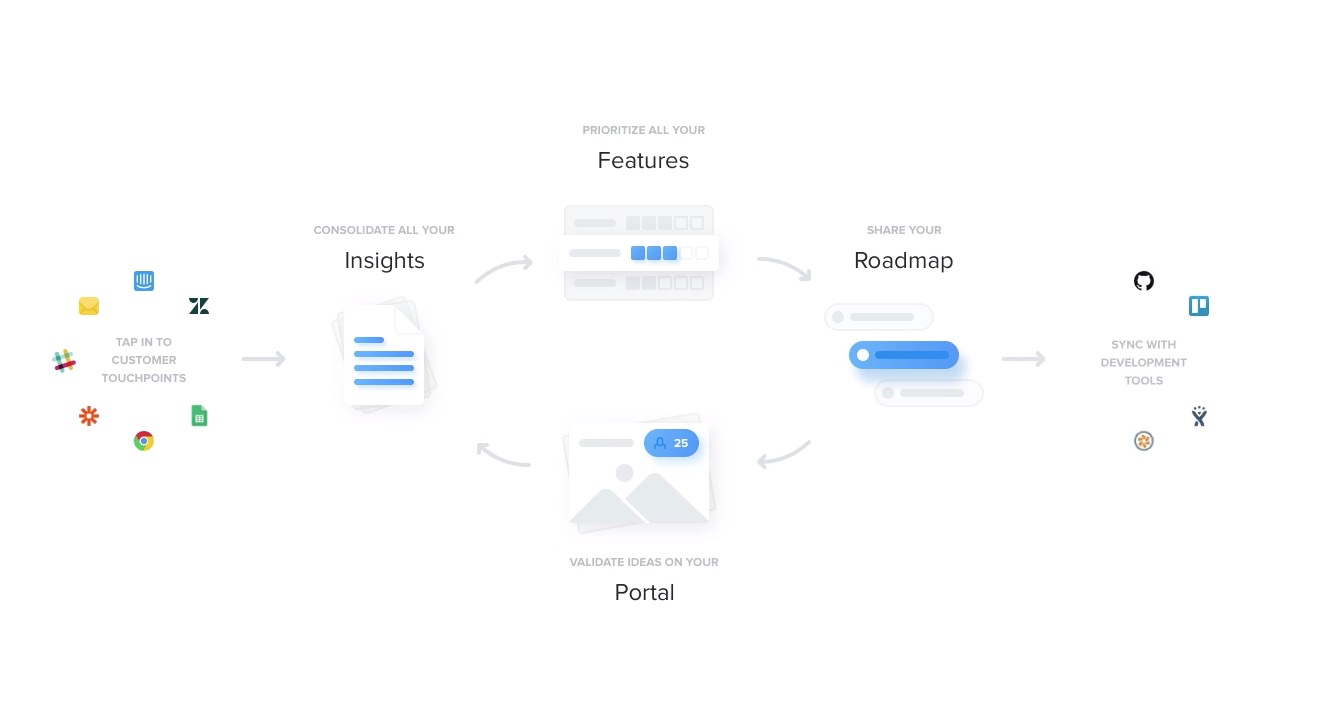I’ve had this vague sense for a while that I need to dig into the product management software space a lot more. So on Friday I just did it — I signed up for a bunch of accounts and started playing around. As I went through each product I realized two things:
- I didn’t know what I was looking for.
- Most of the products I was looking at didn’t know why they wanted me to use it either. The landing pages are all great, but once I was in the product, it was like a different (and very confusing) world. Which is kind of ironic for a product that’s aimed at product managers.
So I took a step back and asked myself why I’m actually doing this. What are the issues I’m hoping to address with software? What am I looking for?
In short, I am looking for a better way to plan. JIRA is a great execution tool — I don’t want to change that part. But JIRA is a terrible planning tool. And our current process of using Basecamp and Dropbox Paper for planning works just ok for me. The combination lacks a bunch of things to make it as effective as it can be.
I then identified what I would need to feel like our planning and scheduling process is effective and efficient:
- A visual, lightweight, flexible representation of our product ideas and overall strategy, to help us with prioritization.
- Prioritization scoring (customer / business impact, effort, etc.). I’d like to try a version of RICE at some point, but it should be flexible enough to use whatever system we want.
- Incorporating, summarizing, and linking customer feedback from a variety of sources. We currently do this in JIRA, and it’s not a great workflow.
- A way to go from general idea to product specifics in an orderly and predictable fashion. Right now we use JIRA, Confluence, Dropbox Paper, and Basecamp, and that can get a little confusing.
This gave me the framework I needed to evaluate the different products I was looking at. I’m not done evaluating, but right now productboard is the one that seems to fit our particular culture and goals the best.

Here are the list of things productboard has going for it:
- The one thing that makes it stand out from all the others is that it’s a flexible system rather than a process (see the overview diagram above). Instead of forcing a particular software development process, it has no opinion on the specific methodology you use to prioritize and get work done. It’s focused on letting you use your own way to gather customer insights, define business goals, and prioritize work.
- It will let us gather all user insights together, and prioritize features based on our goals and objectives (or “drivers” in the productboard language).
- It will let us easily share, communicate, and change the plan without getting too formal about it.
- If we wanted to, we could have a public-facing portal to get feedback on ideas, like this.
Oh, and their Why productboard? page is pretty solid, especially this phrase:
a way that provides transparency, fosters collaboration, and encourages alignment with the broader product team.
I’m not done evaluating yet, and who knows where we’ll end up. But I thought I’d share my initial thoughts and explorations of this interesting meta-industry.